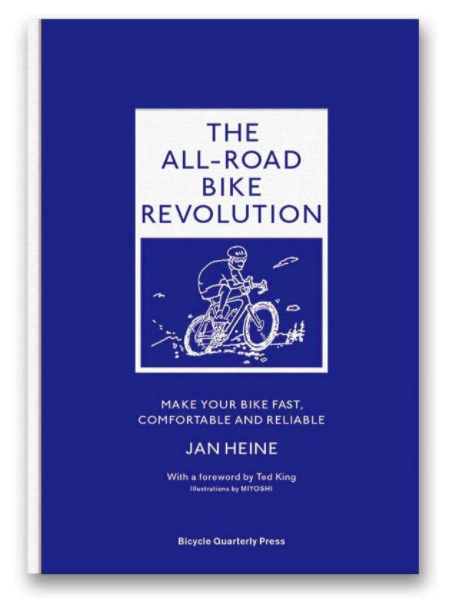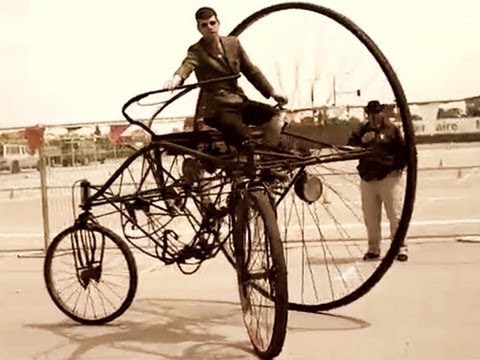
My friend Chris and I have spent a lot of time on the road talking about bikes. Chris follows the tech, and usually has some interesting insights based on the latest research. At one time or another during our rides, we’ve had extensive conversations about handlebars, pedals, gears (he’s a devout single-speeder), seats, tires, and chainrings. As a matter of fact, I just put on an oval chainring that Chris lent me, but have yet to test out.
So a few days back, when he offered up a chance to read the book, The All-Road Bike Revolution, I jumped at it.
I’m about halfway through, and it’s been a great read. Divided into manageable segments, it’s easy to digest. Even when it gets too technical, you never have to bear with the geek-speak too long before you get to something that makes sense to even the most basic cyclist.
Now Chris mentioned when he gave it to me that if he had read this before buying bikes in the past (it’s a new book – 2020 publishing date) he might never have been able to go into a regular bike shop to buy a bike, and I can see exactly what he’s saying. The book goes into great detail on just about every aspect of the bike and gives more data than any but the most engineering-savvy geek could ever want.
But the book also boils things down to a level where even a novice cyclist can make some basic decisions about what he may be able to do to either improve the comfort and handling of his current bike, or look for in a prospective buy. Sure, specific details on geometry can be a bit daunting, but knowing that having wider tires has virtually no effect on rolling resistance while greatly improving comfort is something I can use. Put that together with information on riding position, materials, and the rest of the parts on the bike should make my next purchase something that more closely fits me and my needs.
And yeah, I need it. When I cycled here in the early naughts I started on a mountain bike. But it was only a matter of time before I’d used up all of the roads and trails in the immediate area, so I needed a bike that would take me further. That’s when I switched to a road bike, and I’ve not gone back to mountain since. Now I know I need a little bit of both – something with the ability to cover the long distances of the road, but also to take the trails and gravel for shorter distances should I need it along the way.
So, this book works for me. As the name says, it’s about the “All-Road Bike.” That is, a bike that works in a broad range of situations on multiple surfaces. I’m not a racer or even a trainer (I know plenty of guys who treat their bike rides like a workout). I ride for the pure enjoyment of riding. I’d like to load a bit more on my bike for longer trips, but I don’t want to make the bike impractical for shorter rides. I need it for rough roads and gravel for sure – some of the better rides around here involve shortcuts that aren’t in the best of shape. But of course, I need it to perform well on smooth and clear roads too. So yeah. I need an “All-Road Bike.”
Chris and I often joke about “big-bike” – that is, the industry telling us what we need because we’re too uneducated to know better. We need clipless pedals because “big-pedal” tell us we do. We need dual chainrings because “big-chainring” tells us we do. We need “x” “y” or “z” because the manufacturers of those parts need to sell them to us. And so we end up with an overpriced behemoth that has all of the bells and whistles, but still doesn’t do what we need it to do. This book is helping me understand what I really do need, and I think for this reason especially it would be helpful for anyone looking for a new bike.

